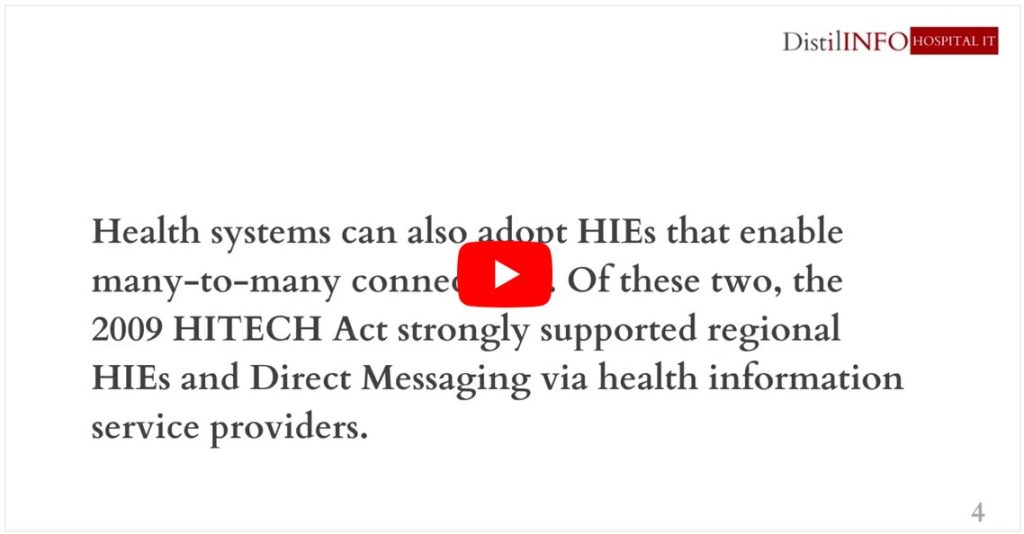
Healthcare organizations have several options in how they facilitate data exchange. However, not all health information exchange (HIE) methods increase the availability and provider use of health information, a study published in the Journal of the American Medical Informatics Association found.
The variety of methods for obtaining information allows health systems the ability to pick which solution uniquely matches its needs.

Some available methods, such as an interface connecting two health systems, enable one-to-one exchange among trusted partners. Health systems can also adopt HIEs that enable many-to-many connections. Of these two, the 2009 HITECH Act strongly supported regional HIEs and Direct Messaging via health information service providers.
Newer methods of data exchange have grown in prominence throughout the years, such as national and EHR vendor networks.
Even though most hospitals use multiple methods of HIE, there is little information on which individual approach is the most impactful, the researchers stated.
By using data from a national survey of hospitals, researchers examined how frequently the method was adopted and how often it was used.
Although most frequently adopted, provider portals and access to outside EHRs were used the least. Provider portals were adopted by over 66 percent of surveyed hospitals but only reported as frequently used by less than 35 percent.
Researchers attributed the low use to the fact that both methods are usually outside a provider’s primary EHR. Making providers leave their workflow may pose a barrier to use, the researchers stated.
The study also examined how the adoption of these HIE methods related to information availability and use by providers.
The findings showed that all four many-to-many HIE methods— direct messaging via HISP, regional HIE, single EHR vendor, and national network—were linked to a greater likelihood of available information.
“And while each method connecting hospitals to many other providers was independently associated with greater reported information availability, only a subset of those methods was associated with higher reported information use,” said Jordan Everson and Vaishali Patel, study co-authors. “These findings suggest that while each method led to increased information, certain methods may be easier to use and provide information that may be more valuable.”
Out of the four methods, only single-vendor networks and national networks also enabled greater data integration into EHRs and were associated with more use of that information.
“These findings reinforce the crucial importance of ‘last mile’ issues in driving the value of information exchange: without usable, integrated methods of obtaining information, the available information may not be used,” the researchers wrote. “We suspect that issues beyond integration—such as the quality of data and the ease of finding specific information—may also underline the greater apparent use of the single EHR vendor networks and national networks.”
It is essential to monitor how HIE adoption is impacted by Trusted Exchange Framework and Common Agreement (TEFCA), Everson and Patel mentioned. TEFCA is a set of principles that helps enable the nationwide exchange of health information across disparate health information networks
However, TEFCA may reduce the need to use these complementary methods by enabling broader access to exchange partners.
As TEFCA is implemented, future studies should look into how varying HIE methods become substitutes, thus reducing the need for multiple HIE methods.
“Over time, the number of methods used by hospitals may diminish, or the frequency of using methods not connected to TEFCA may decrease,” the researchers mentioned. “This may represent increased value by reducing the cost associated with adoption and maintenance of methods that do not independently relate to greater use of information.”
Source: EHR Intelligence




Leave a Reply